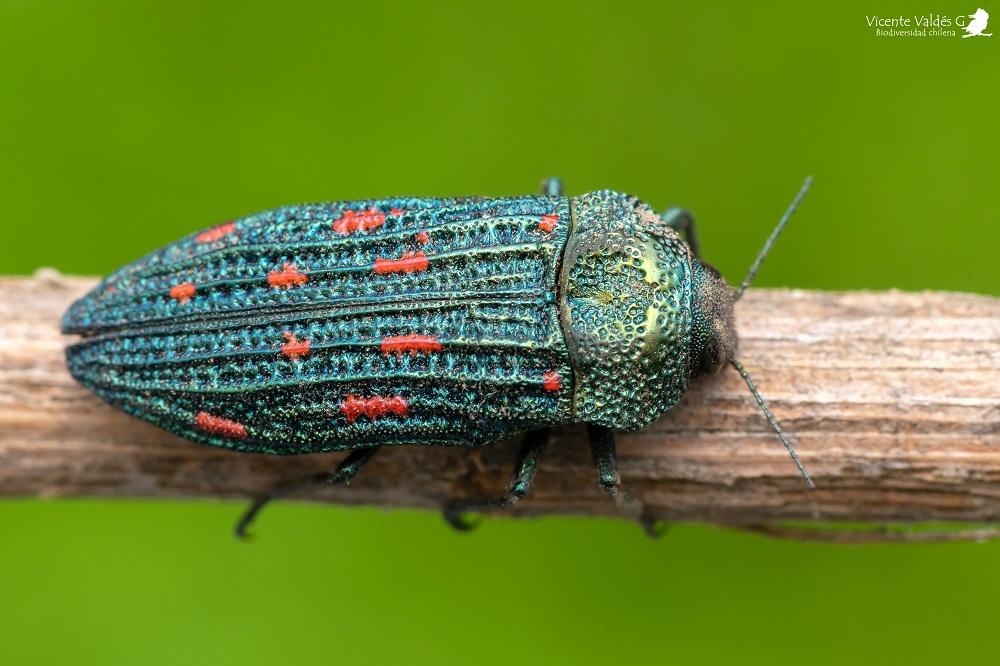These beetles are a jewel
The last mystery of the Pharaoh Tutankhamon does not refer to an intricate hieroglyph, a new funeral chamber or subtle clues left near his grave;Wrap a fabulous figure of a greenish sculpted beetle.This jewel is the most prominent of a beautiful pectoral found by archaeologist Howard Carter in 1923 in one of the rooms adjacent to the treasures.Beetle wings are treated with gold, silver, glass and semi -precious stones, and the animal is the heart of the figure of a hawk.
The insect supports with its wings and legs the weight of a heavenly boat in which the left eye of Horus lies, the moon symbol.In its lower legs there are many other symbols about eternity.The gods dance, and complete iconography speaks of the cycles of the sun and the moon, of the resurrection and the eternal reign of Egypt.But the greenish material of his body and his brightness captivated in 1996 the Italian geologist Vincenzo de Michele.And it did not happen in the Egyptian antiques museum, where the most popular pharaoh treasures of all time are exposed.De Michele ran into this fabulous beetle for the first time in a tourist postcard that fell into his hands on a trip to Egypt.
"We realized for its brightness and appearance that it could be a tectita, a crystal of the Libyan desert," recalls this expert.These stones are scattered in the great sea of sand, in the Eastern Sahara, one of the most inhospitable places in the world.After obtaining permission to examine the beetle, from Michele he found traces of iridium, a very rare material on the earth and own meteorites.Subsequent investigations determined that the silica of the figure had resulted from the probable impact of an asteroid about 28 million years ago, which heated up to 2.000 degrees the desert sand, forming those stones.
The beetle made of this glass of extraterrestrial origin is unique, writes archaeologist Andrea Byrnes in the Egyptological magazine.Nor is it known how the gem could find the way from the deep desert to the hands of the royal jewels about 1 ago.330 years before Christ.But it is understandable that, before such an extraordinary material, Egyptian artisans decided to take advantage of it to shape the beetle, to the detriment of other animals.
This small animal is almost omnipresent;It appears in dedicated verses of papyri such as the book of the dead, in the form of jewels that replace the heart of the pharaohs or among their bandages, in amulets of good luck.Beetle wings have been found - the eliters - in objects of the Tutankhamon itself, and even embalmed specimens have been unearthed.The French entomologist Yves Cambefort, of the National Museum of Natural History of Paris, has even related the shape of the great pyramids with the humble biology of a kind of player beetle.
Before the sun rises, the animal comes attracted by the excrement of the cattle to form a ball that easily rolls.He is very jealous with his treasure.You have to fight hard so your colleagues do not snatch the ball.Sometimes, he works as a team with his partner;On other occasions, she uses the ball to win her partner.In the early hours, the beetle buries its booty and excavates a tunnel, creating in its mouth a bridal chamber, where it looks.The female then places her eggs, and the larvae feed on the excrement.The pupae emerge from the ball and metamorphose in adult.
This extraordinary event could give the idea of mummification to the first Egyptian priests.The animal's head has the shape of a sun that is being born - osiris, the first mythical king of Egypt -.The excrement ball that pushes is nothing but the sun that advances throughout the day and then buried in a grave.But the sun will rise the next day.The pupa - a mummy.
According to Cambefort, if the Great Sphinx represented a Pelotero beetle, the pyramids, with its intricate labyrinth of funeral chambers, they would be the equivalent of a giant accumulation of cattle excrement (very important in religious beliefs).It is a surprising interpretation, not exempt from controversy, since the French entomologist will formulate it back in 1987.
"When the Egyptian primitive saw the players emerge from the desert sands, they linked him to the spontaneous creation of life from nothing," Brett Ratcliffe, professor and curator of the Entomology Division of the State Museum of the State Museum of the State Museum of the State Museum ofThe American University of Nebraska.“Of course, that is not true, since they did not understand the vital cycles of these beetles, where the breeding lives inside a ball of manure used as food when they were buried by their parents.And much of the symbology comes from there ".The biology of players continues to talk in these last two years.A study by Current Biology published by Marie Dacke, from the University of Lund in Sweden, suggests that during the African closed nights, these animals are guided by the shine of the Milky Way to draw their paths on which to roll their manure balls.

Another investigation in the same publication affirms that these animals use these balls as cooling elements in the hottest hours;They climb them and regurgitate liquids to cool their legs.It would be the first case of an insect that uses a mobile shelter to protect yourself from heat.The truth is that beetles have been astonishing the human being long before.Sculpted stone earrings are known with their shape for between 10.000 and 20.000 years.Cambefort himself believes that these are bupnids, popularly encompassed inside the jewel beetles for their impressive metallic and bright metallic tones.But there are other families that exhibit this beauty equally.
Some, such as Hungarica anthaxia, rarely combine blue and golden metal stripes in the thorax and abdomen, although its most common version is of a golden green with bands of a bright pink in the lower parts of its body.Other species are very elusive and difficult to find.The Chalcophora Mariana dismisses a beautiful texture that looks like silver mixed with gold.To the Spanish photographer José Antonio Martínez (author of the images that illustrate these pages) cost him six years of search until he managed to immortalize this creature.The magical moment occurred while it was on the dead trunk of a pine of Aleppo in La Devesa del Saler, of the Albufera Natural Park, in Valencia.
Hoplia coerulea males exhibit a marine metallic blue at the top of their shell.They cling to the branches of vegetation with their front legs, while the rear and the rest of the body suspend in the air.Martínez considers that they are the little gymnasts of the beetle -world when making these mating guidelines."They do it to get the attention of females".
The lives of some adult jewel beetles are so short - 15 days - that their photographic capture needs perseverance and good luck before they are put out of reach at the top of the trunks.Martínez confesses that he feels bewitched by these creatures for years.
BUPRESTIS SANGUINEA feeds on Efradra plants.The coloration of your body varies extraordinarily from male to female.The male has a bluish black hue and yellow stripes on the wings, while the female shows an intense blood with blue black stains of irregular size.Thousands of jewel beetle species are known, distributed in forested and coniferous areas - it is legendary their ability to smell pine fragrances to tens of kilometers -.They also abound in tropical and subtropical regions.Another group that belongs to a different family generates a trade between collectors according to the brightness and color of its shells, getting to pay up to $ 500 for one that radiates like pure gold.
There are more than one hundred species of the genus Chrysina, whose optical properties are fascinated to researchers from the University of Costa Rica.The cuticle that covers its shells has at least 70 layers of chitina, and each one offers a refraction index different from the light.These extraordinary specimens break the visible light and break it down in a rainbow in a way similar to a prism.Each layer strongly reflects a different color, and optical interference provide that gold and silver metallic shine, according to a William C study.Vargas published in the Optical Material Express magazine.The finding can lead to obtaining pigments that look like gold or silver, or even materials that increase the performance of solar panels.But the reason for that beauty must be sought in the advantages of evolution."Believe it or not, these metal colors as bright can act as camouflage!" Exclaims Ratcliffe."These creatures hide during the day, and the bright surface of these beetles reflects the surrounding color of the vegetation".
It is hard to believe that these designs are invisible in a place like the jungle, but the truth is that the war camouflage is vital in a battle that has been freeing millions of years against their predators.“It is true that on a white background they stand out for their wonderful tones of silver and gold.But in a tropical forest they fade ".
The technique, this entomologist explains in detail, consists in the reflection of light.Beetles are confused with millions of drops of water scattered by vegetation, so common in the landscape of any wet jungle."In addition, one cannot see colors during the night, which is when these beetles are more active and leave to feed".
The term beetle results from the vulgarization of beetles.Designates an entire order within the zoological nomenclature.But talking about coleoptera is talking without a doubt about the most formidable evolutionary success ever reached by a group of animals."Approximately 1.8 million species of animals and upper plants have been described," explains Jorge M.Lobo, research professor at the National Museum of Natural Sciences of Madrid, belonging to the Higher Council for Scientific Research (CSIC)."Of these, one million are insects.And of that million, about 400.000 species would be beetles ".The story does not end here.The variety of beetles is so amazing that there are not enough experts to catalog it.In just a tree trunk of the Panama jungle, entomologists came to count 950 species.
Wolf talks about described species, but estimates multiply by at least five the number."We could be talking about the order of one or two million beetle species".In Spain there could be about 15.000 or 20.000 species, but we barely have specialists or works that describe 10% of these, says this expert.We live in the era of beetles, since they emerged during the Permian more than 250 million years ago.They are the true owners of the planet.Its explosion is associated with the appearance of flower plants.They have survived without difficulty the extinction of dinosaurs, from a strategy that includes an original and different design, fleeing roads without return such as gigantism.
"Your success is difficult to digest.They are animals with a hard external shell.Imagine them as small tanks armed with a shell, ”says this Spanish entomologist.The only means that have not colonized is the ocean.There are species that survive at heights of 5.000 meters in the Himalayas and others that have colonized the Antarctica.The largest known specimen belongs to the species Titanus giganteus.Specimens of up to 16.7 centimeters in length have been measured in the French Guyana.At the other extreme, psilids sometimes do not exceed the millimeter of size.
One of the keys to the success of this biological design is its architecture.Many are capable of flying, but their lower eliters can be welded to the rest of the body, increasing hermeticism so as not to lose water.In places like the Namib desert, sometimes the only source of moisture comes from coastal fog.Then the tenebriocoids are perched on the highest parts of the dunes.The naturalist David Attenborough describes the behavior of these animals when fog banks arrive: they are placed in a row, looking at the coast, and raise their abdomen while alternating the legs alternately.The fog ends up soaking them, and water condenses in the cavities of their bodies.
The engineers of the Massachusetts Technological Institute (MIT) have taken good note of the animal's strategy.Michael Rubner and his team estimated that the fog clouds were so nimic that the drops that accumulated in the back of the beetles had a diameter of between 15 and 20 million -sly of subway.The condensation of this tiny amount of water required contact with a material capable of collecting and directing the water.The scientists discovered wax covered channels that repelled the droplets, driving them to areas that attracted them to growing them."By increasing size, overcome the force that sustains and slips to the mouth of the beetle," Rubner said in a MIT bulletin.After all, even beetles need to drink.
Coleoptera eat practically all.There are those that feed on all kinds of excrement, animals of animals or púphrid matter that falls from the jungle trees.Fitophagi are specialized to digest any plant.Carnivores attack their fellow men and other insects.And they also make forms of survival that would be ridiculous for the best military strategist.A kind of oil has a surprising ability to take advantage of wild bees.In the California desert, his larvae climb the herbal stems until they group.The larva.At that time, the larvae jump to the body of the male.They will take advantage of the encounter with a true female to change transport.Once on the back of the female, the bee will take them to her den, where she has accumulated a large amount of pollen to feed her young.The oil of the oil company will not only end the food, but will devour the bee larvae before becoming pupae and emerge as adults from the desert.
On a planet dominated by monocultures, the feast for many beetles is served.Pests that cause huge economic losses in intensive agriculture reflect the human desire to harvest more and more.How will it go unnoticed by a group of animals that have been fixed since the extinction of dinosaurs?"When planting huge extensions of grasses, it is logical to wait for this type of invasions," says Lobo.But evolutionary success does not make them invulnerable.Many confuse cockroaches with beetles (two different zoological orders).There is a myth that presents a world after a nuclear catastrophe dominated by cockroaches.True in part.Cockroaches resist radiation dose up to 10.000 rads (1.000 rads kill a person).And the false flour gorgjos are incredibly resistant beetles.The experiments show that they can survive at doses of up to 100.000 RADS!But they are exception.In many other cases, beetles are also very sensitive to human pressure.Jorge Lobo summarizes this last aspect in a very graphic way, referring to the popular player beetle: “Before it was common to see them for hundreds in the field, rolling their manure balls.But now many have disappeared ".Drugs are supplied to the cattle to avoid the proliferation of parasites, but they remain as remains in excrement.And beetles avoid them.These excrements are not recycled, prevent the growth of grass and make it unproductive.An example illustrates the importance of these children although efficient cleaning agents, concludes the Spanish entomologist.When sheep were introduced in Australia, the damage that their excrements made in the pastures were proven."The beetles had to import to recycle the stool and fix the problem".







![47 best antiage nutritive cream in 2022 [based on 326 reviews] 47 best antiage nutritive cream in 2022 [based on 326 reviews]](https://website-google-hk.oss-cn-hongkong.aliyuncs.com/drawing/article_results_6/2022/2/27/1918fc37c66ad30564173e69d9df88a0.jpeg)
